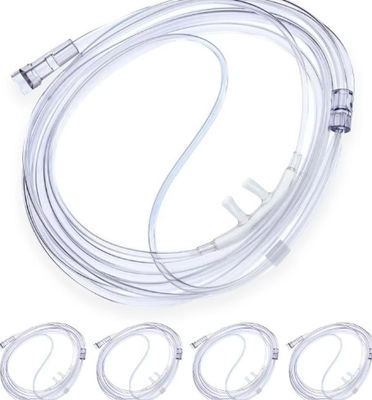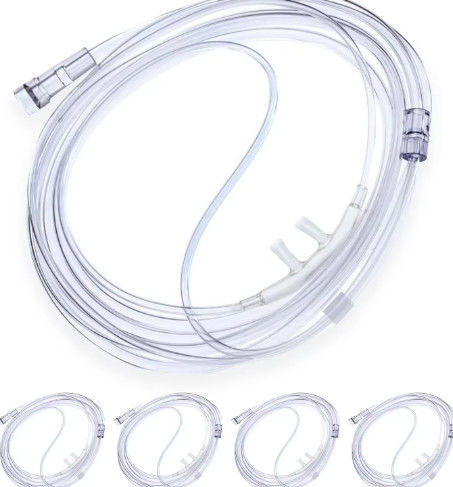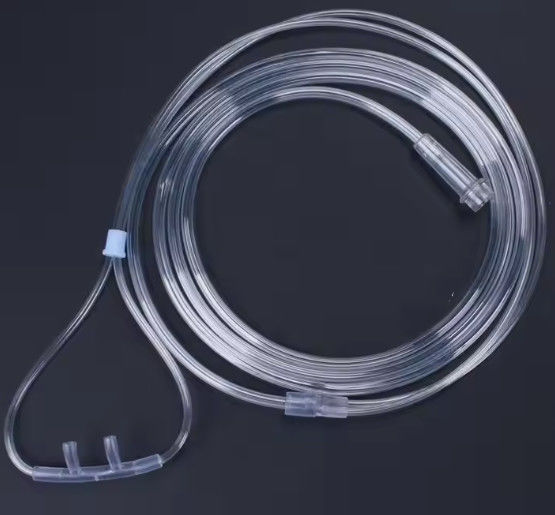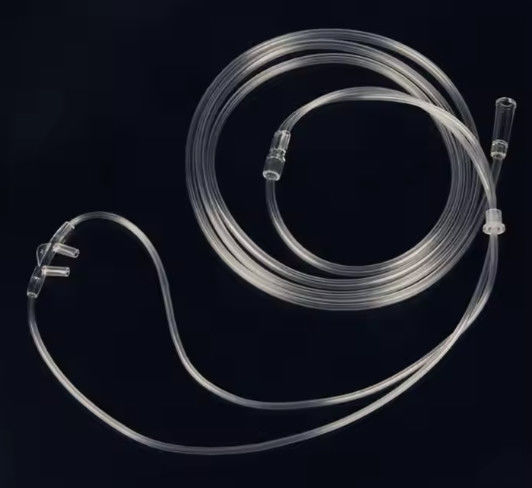-
Highlight
Infant Nasal Oxygen Cannula
,Adult Nasal Oxygen Cannula
,2.1m Nasal Oxygen Cannula
-
Place Of OriginChina
-
Disinfecting TypeEO
-
SizeInfant/Child/Adult
-
StockNo
-
Shelf Life3 Years
-
MaterialPVC
-
Quality CertificationCE
-
Instrument ClassificationClass I
-
PropertiesMedical Materials & Accessories
-
Product NameNasal Oxygene Cannula Oxygen Tube For Infant And Adult
-
UsageICU Medical Use
-
FunctionBreathing
-
SampleAvailable
-
OEMAvailable
-
Place of OriginChina
-
Brand NameHenan
-
CertificationCE
-
Model NumberCan be Customized
-
Minimum Order Quantity5000pcs
-
PriceNegotiable
-
Packaging DetailsIndividual Packaging
-
Delivery Time24-30 days
-
Payment TermsL/C, T/T, Western Union
-
Supply Ability50000000pcs per month
2.1m Nasal Oxygen Cannula Oxygen Tube For Infant And Adult
2.1m Nasal Oxygen Cannula Oxygen Tube for Infant and Adult
Product description
The Nasal Oxygen Cannula is a medical device used to deliver oxygen to a patient's respiratory system. It is typically made of soft plastic and features two long, thin tubes, with one end connecting to an oxygen supply source and the other end inserted into the patient's nostrils. This design allows the patient to comfortably inhale pure oxygen through the nasal passage, thereby increasing blood oxygen levels.
The Nasal Oxygen Cannula is commonly used in settings such as hospitals, ambulances, and home care to treat symptoms of respiratory distress and oxygen deficiency. Its lightweight design and ease of use make it a popular oxygen therapy device widely utilized in various medical settings.
![]()
Key features
- Comfortable Design: The Nasal Oxygen Cannula is crafted from soft, flexible materials to ensure patient comfort during extended use.
- Dual Tubing: Equipped with two tubes, one for oxygen delivery and the other for secure placement in the nostrils, facilitating efficient oxygen administration.
- Versatile Sizing: Available in a range of sizes to accommodate varying patient needs, ensuring a proper fit for enhanced effectiveness.
- Secure Connection: The cannula features secure connections to oxygen sources, minimizing the risk of leaks and ensuring consistent oxygen delivery.
- Lightweight and Portable: Designed for ease of use and portability, making it ideal for use in hospitals, clinics, and home care settings.
- Adjustable Flow Rate: Allows for the adjustment of oxygen flow rates to meet individual patient requirements under medical supervision.
- Compatibility: Compatible with a wide range of oxygen sources and equipment for seamless integration into existing oxygen therapy setups.
- Disposable and Reusable Options: Available in both disposable and reusable variants to suit different preferences and requirements.
- Easy to Clean: Facilitates simple cleaning and maintenance procedures for improved hygiene and longevity.
- Medical Grade: Manufactured using high-quality materials and meeting medical standards to ensure safety and efficacy in oxygen therapy applications.
Application
- Hospitals and Healthcare Facilities: Nasal Oxygen Cannulas are extensively used in hospitals and healthcare facilities to provide oxygen therapy to patients with respiratory conditions, during surgeries, and in intensive care units.
- Emergency Medical Services (EMS): EMS personnel utilize Nasal Oxygen Cannulas to deliver oxygen to individuals experiencing respiratory distress or in need of immediate oxygen supplementation.
- Home Care: Patients with chronic respiratory conditions or those requiring long-term oxygen therapy often use Nasal Oxygen Cannulas at home to maintain adequate oxygen levels and improve breathing.
- Rehabilitation Centers: Nasal Oxygen Cannulas are employed in rehabilitation centers to support patients recovering from respiratory illnesses, surgeries, or injuries.
- Ambulatory Settings: Portable oxygen concentrators paired with Nasal Oxygen Cannulas enable patients to move around and engage in daily activities while receiving oxygen therapy.
- Palliative Care: In palliative care settings, Nasal Oxygen Cannulas help alleviate respiratory distress and improve the quality of life for terminally ill patients.
- Sleep Apnea Treatment: Nasal Oxygen Cannulas can be used in the treatment of sleep apnea, providing continuous positive airway pressure (CPAP) therapy to improve breathing patterns during sleep.
- Aircraft and High Altitude Travel: Nasal Oxygen Cannulas are used in aviation and high-altitude travel to provide supplemental oxygen to passengers experiencing hypoxia due to reduced oxygen levels at high altitudes.
- Sports and Fitness: Athletes and fitness enthusiasts may use Nasal Oxygen Cannulas for oxygen supplementation during training or recovery to enhance performance and endurance.
- Veterinary Medicine: Nasal Oxygen Cannulas are also employed in veterinary medicine to deliver oxygen to animals in need of respiratory support during surgeries or medical treatments.
![]()
FAQ
1.How much oxygen is given in a nasal cannula?
A traditional nasal cannula can only effectively provide only up to 4 to 6 liters per minute of supplemental oxygen.
2.What are the disadvantages of nasal cannula?
Low flow nasal cannulas can only deliver a nasal cannula flow rate of 4-6 liters of oxygen per minute. They don't provide humidified or heated oxygen. So, they often dry out the nasal passages. This can lead to bleeding or irritation.
3.How often should an oxygen nasal cannula be changed?
Every 2–4 weeks
Every week, wash your nasal cannula, clean your air filter and wipe the outside of your concentrator with soap and warm water. Every time you refill your humidifier bottle, wash it with soap and warm water, rinse well and refill with distilled water. Every 2–4 weeks, replace your cannula or mask.
4.What is the difference between oxygen and nasal cannula?
Conventional nasal cannula devices can deliver flows of only 1 to 6 L/min, whereas high-flow nasal oxygen therapy delivers flows from 1 L/min to 50 L/min, depending on the device.
5.Is a nasal cannula 100% oxygen?
The nasal cannula consists of two prongs, one inserted into each naris, that deliver 100% oxygen. To be effective, the nasal passages must be patent, but the patient need not breathe through the nose. The flow rate settings range from 0.25 to 6 L/min. The nasopharynx serves as the oxygen reservoir .
6.What is the purpose of a nasal cannula?
A nasal cannula is a device that gives you additional oxygen (supplemental oxygen or oxygen therapy) through your nose. It's a thin, flexible tube that goes around your head and into your nose. There are two prongs that go inside your nostrils that deliver the oxygen.




